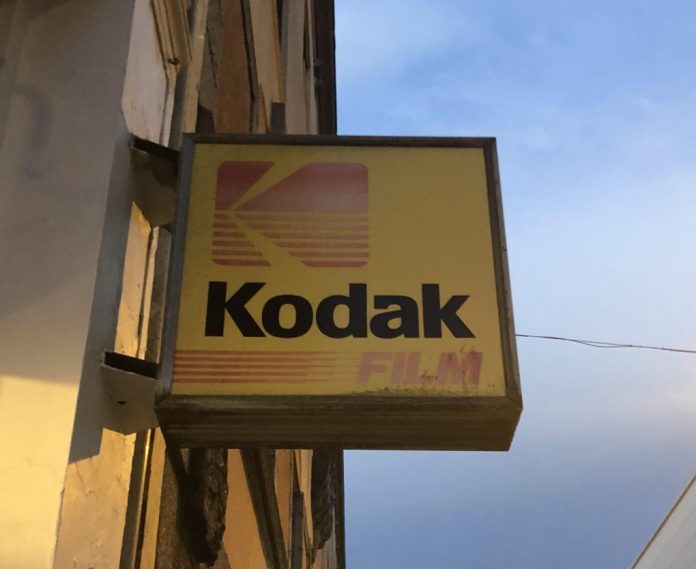Marine Harvest’s newly launched MOWI investment will be expensive, and will certainly cost a lot more than estimated. It will also take longer than management has calculated.
“Salmon is good. MOWI is goodness.”
Foreign and Pompous. Those were the whispers in the crowd over the new slogan launch of the company’s new brand in Edinburgh on Tuesday.

But maybe that’s exactly what’s needed?
Deja-vu
CFO Ivan Vindheim entered the podium. Marine Harvest was ready to take the leap. They were to launch their own brand, called MOWI Salmon, after the salmon farming pioneer, Thor Mowinckel. With an aim to hit the Asian markets. That was in August 2014.
After that, nothing much happened. The effort made on the MOWI Salmon brand had not been successful.
Now, four years after, they are doing the same again, except they have removed the “Salmon” after MOWI. But now they go all-in. By changing company names, the branding will build and herald a new era. Now they are tied to the mast. There’s no way back.
After some costly experiences, the group management realized that branding is not a Norwegian expertise, especially not for a production company like Marine Harvest.
“Yes, that’s what we realized and picked up people from abroad,” said sales and marketing director, Ola Brattvoll, to SalmonBusiness on Tuesday.
Enter Andreas Johler, an experienced brand specialist who had previously worked with Coca Cola and Unilever.
- Read also: The Coca Cola of salmon: Mowi brand aims to provide a billion euros in annual turnover by 2025
Brand
Lerøy’s social contact Krister Hoaas recently wrote on Twitter, in connection with the MOWI launch, that he is working with a “seafood company with an international brand name”.
But then he can not have particularly high demands on what characterises and forms a brand.
In foreign grocery stores, Lerøy does not have any position or visibility. Neither Lerøy nor any other brands, possibly with the exception of Findus, Birds Eye and Iglo, appear. They do not reap a price premium.
Absolutely no one markets seafood, and especially not salmon, near the way Gillette presents shavers, Rolex sells watches or Lipton presents tea. They do not sell salmon such as Ben & Jerry’s selling ice cream or Colgate sells toothpaste.
The good feeling
Mercedes has the slogan ‘das beste oder nichts’. Their customers believe in it. The Daimler Group can set a price premium on its luxury cars. Customers get a good feeling from the product, showing loyalty, habits and preference. And Daimler capitalises on it.
Salmon from Lerøy and Marine Harvest has a good reputation amongst buyers, wholesalers, smokeries, grocery stores and restaurant chains. That’s in the B2B world and not at the end customer level. For example, Marine Harvest has been a supplier to Buckingham Palace since the early 1970s. But it must not be confused with a brand – which addresses and speaks directly to the end customer.
Coca Cola spends 11-12 percent of its revenue on marketing. And they get a decent return on this. Neither Lerøy nor Marine Harvest don’t spend anywhere close on advertising and marketing, nor enjoy any price premium or position at the customer.
Marine Harvest plans to spend 35 million euros on its relaunched brand. This corresponds to 0.9% of the group’s revenue in 2017. So not too groundbreaking. However communicating that directly to the customer requires deep pockets. This is a completely different game to serving B2B/industry customers.
Differentiate
MOWI will differentiate itself from its competitors through its own salmon stock, own feed and high omega 3 content. Absolutely unique it is not. Faroese salmon also differentiates itself with its own feed and higher omega 3 content. They also get a price premium. But that’s probably more because the amount of Faroese salmon volume is so low and demand is high, than they have built a branding position.
Morten Vike, former CEO of Grieg Seafood, spent time at one of Norway’s brand companies, Toro. When he joined Grieg he said, among other things, “The easiest way to build brands is to have done it for 50 years.” Grieg Seafood, under his leadership, would build brand equity. They did not make it.
Thus, there has been no lack of attempts to build brands on farmed salmon. But to differentiate homogeneous products, such as crude oil, tomatoes and salmon, is difficult. It requires financial resources and targeted work – for a long time. But it is possible, as shown by Tyson Chicken, Tate & Lyle Sugar and Dole Bananas.
Call Number
Another challenge, however, is that only a part of the MOWI salmon is to be branded. The rest will go in the bulk market. There are challenges for communication, segmentation and differentiation.
Another barrier is that supermarket chains’ lucrative private labels must be elbowed out of the way. One might have an idea of building brand, but do not get shelf space.
That Marine Harvest will spend 35 million euros annually and in six years harvest 100 million euros in increased operating profit sounds alluring, but it’s hardly realistic. It’s easy to set a goal, but its another thing to achieve it. Having said that, the company has set the bar high and has outlined clear measurable numbers. They have quantifiable goals and have embarked on new territory. This is going to be exciting.


